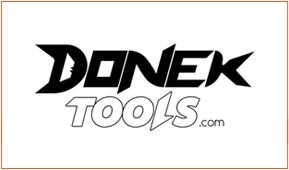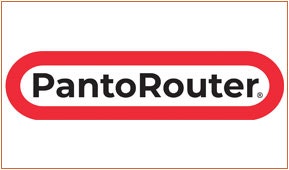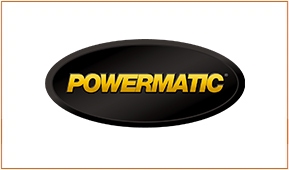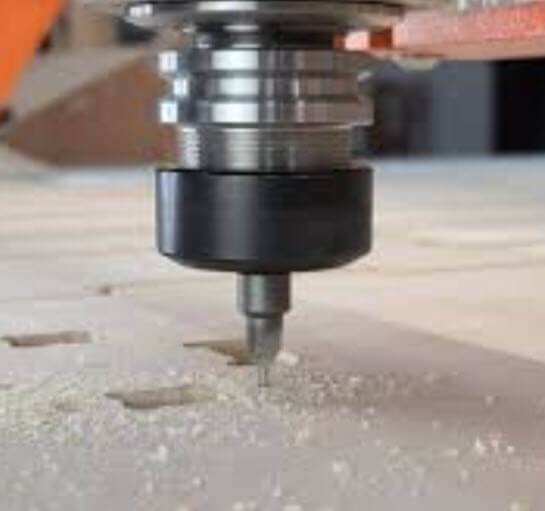
Hammer Drill to Drill Through Concrete
Drilling holes in concrete may seem like a daunting task, one with which an amateur would feel more inclined to call a trained professional. Drilling through harder materials seems more advanced and difficult, but the process can remain simple and safe with the correct tools.
It is important to note, as with all power tools, to make sure that one has the proper ear and eye protection.

Whether one needs to drill holes to hang a shelf, do some renovations in one’s basement, install lights or complete other do-it-yourself tasks, a hammer drill can be your best friend. The following is a basic overview as to how the hammer drill functions best and how to use it in the most safe and efficient way.
Buying a Hammer Drill
Hammer drills are manufactured by numerous companies, many of which we are familiar with and some no-names. When looking to purchase a reliable and long lasting drill, one should take brand names into account. There are cheaper options, but they tend to have less power and a much shorter life spam. Brand names such as Bosch, DeWalt and Makita are known for their resilience, power and good name. It is worth the extra money to invest in a quality product that will last for a long time.
There are certain features to look for when purchasing a hammer drill. These features include: variable speed, hammering function, depth setting, good grip (a handle for your other hand is very helpful) and power. After your purchase, you should become familiar with your hammer drill. As with all tools, one should read through the manual to familiarize oneself with all the functions available.
Selecting the Proper Drill Bit
Drilling through cement board, cinder block and masonry with a hammer drill requires special masonry bits. Select a bit with special carbide tips designed to withstand the impact of hammer drills. For excellent cut quality in concrete, choose either the Masonry Carbide Tipped SDS PLUS Drill Bits or Masonry Carbide Tipped SDS MAX Drill Bits.
On Your Way to Drill
People tend to use hammer drills to drill holes for plastic anchors or to create a hole to feed wires through. Make sure you have a selection of bits to ensure the most accurate size.
Set the Depth
Most hammer drills have a depth stop attached to the drill. Read the user manual and learn how to use it. If your machine does not have a depth gage or you prefer to work without it, a great alternative is to simply wrap tape around your drill bit where you need to stop drilling.
Hold Your Drill Properly
Holding your drill properly is the difference between success and failure in drilling the required hole. If not properly balanced, the drill bit can run leaving you with a much wider diameter. Therefore, it is important to first make sure that you are well balanced. Stand with your feet shoulders width apart and the drill firmly in your grip to where you can lean into it. Have one hand holding the drill like a gun with a finger on the "trigger" and use the other hand to keep the drill level.
Drill
When drilling, make sure that your drill bit is hitting its mark and your bit is perpendicular to the drilling surface. Start the drill on slow and begin to establish a hole where your bit will no longer slip. After establishing this hole, begin to speed up the drill and continue at full speed until you hit your depth. Throughout this drilling, you may create a buildup of dust within the hole that has not been removed through normal drilling.
Please Note
When drilling, it is not too uncommon for the drill to hit a hard spot where drilling becomes very difficult. Do not force your drill too hard. Simply getting a masonry nail and hammering it into the hard spot to break the concrete can enable you to continue on smoothly.
Tips
- Do not bear down on the drill with all your strength. This could cause the bit to break.
- When using a hammer drill, you only need to withdraw the bit occasionally to remove concrete dust.
- Running a small amount of water over the area while drilling will reduce the heat of the bit and the friction between the sides of the concrete and the drill.
- A good quality hammer drill will finish a 2-inch deep, 1/4 inch wide hole in concrete block in less than a minute. A standard drill will take much longer and may not work at all in brick or poured concrete. Use a hammer drill where at all possible.
- While it is possible to drill into concrete or brick with a standard drill, it is not advisable to try.
- A second person holding a vacuum cleaner hose (or half a paper plate taped to the wall) just below the hole you are making may save a lot of time on cleaning up after yourself.
For excellent cut quality in concrete, choose either the Masonry Carbide Tipped SDS PLUS Drill Bits or Masonry Carbide Tipped SDS MAX Drill Bits by Amana Tool.
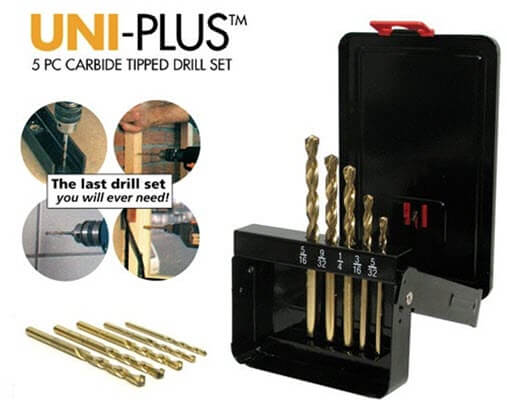 <- Or, the Amana Tool UNI-5000 5-Piece Carbide Tipped Masonry Drill Bit Set.
<- Or, the Amana Tool UNI-5000 5-Piece Carbide Tipped Masonry Drill Bit Set.





